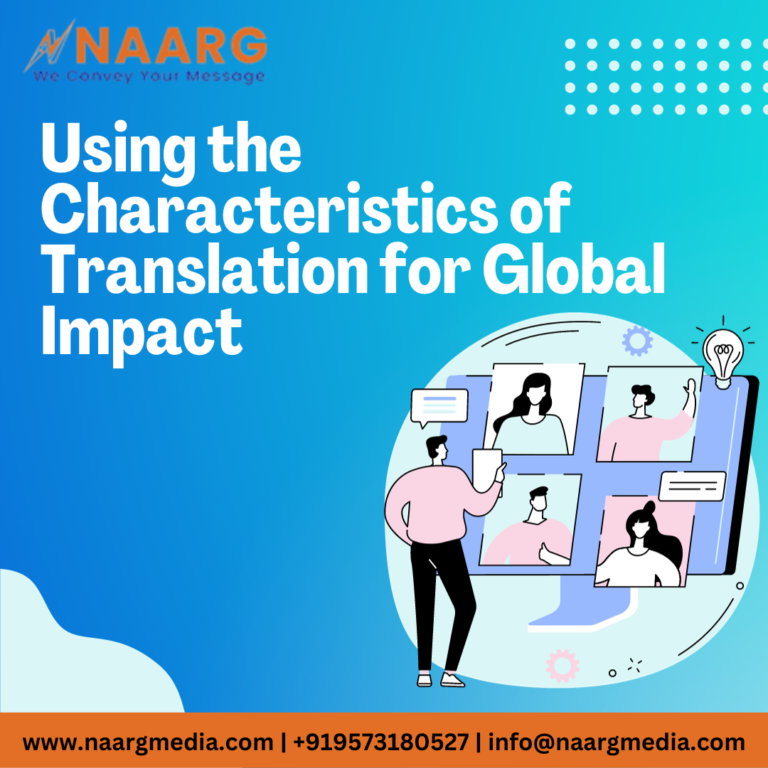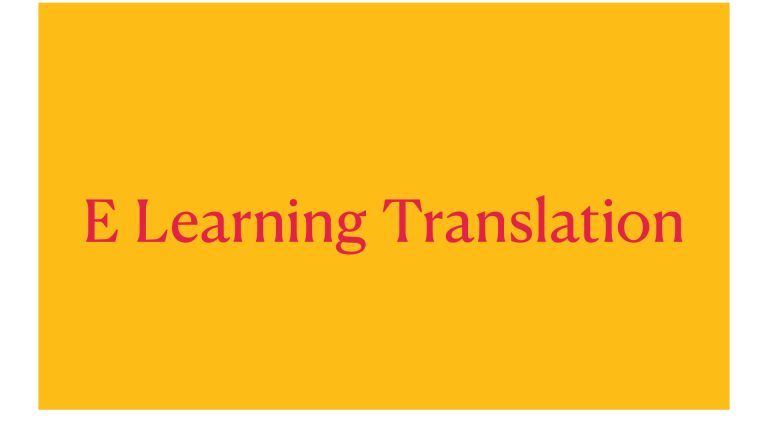There is this famous line by Anna Rusconi, ‘Words travel worlds. Translators do the driving.’ Well, where is the lie in that? Translation and translators do play a pivotal role in fostering global impact by breaking down linguistic barriers and facilitating cross-cultural communication. Have you ever wondered how you can distinguish between high-quality translation and poor-quality translation?
Misconceptions can occur when deciphering whether the translated document is a good translation. For instance, sometimes word-to-word translations do not necessarily mean high-quality translation. Characteristics of translation that are considered good translations need to be thoroughly checked on many points.
In this blog post, we will tell you about the importance of translation and the types of translation. And how to find the top characteristics of high-quality translations. So, read this blog to understand the nuances of translation that are essential for making a global impact.

The importance of translation in a globalized world
You might be wondering why we need translation when some common languages are used for communication in business, like English. But did you know that there are 7168 languages in the world? And using a few languages for communication would not suffice. Moreover, your business might face a major downfall if you are focusing on only one language. That’s where translation comes into play.
If you want to become a part of an international market, then language should be the prime focus for your organization. Many countries give importance to their mother tongue. For instance, South Korea deals with their business in their mother tongue, Korean. And when they encounter international business deals, translation bridges the gap between the two sides. We live in a world where communication and commerce transcend borders, and translation is the key to these gaps.
Translation allows individuals and businesses to access a broader target audience and tap into new markets, making the exchange of ideas and information more seamless and inclusive. Moreover, translation fosters cross-cultural empathy, where people tend to appreciate perspectives that are marked by cultural diversity.
Types of Translation
Translation is a diverse field, and every field serves its purpose and context. Let’s have a look at the different types of translation.
1. Literary Translation
Literary translation, as the name suggests, involves the translation of literature like novels, poems, and plays. With literary translation, you need to translate the meaning while also keeping in mind the unique literary style of the author.
2.Technical translation
Technical translations are essential for translating technical documents. Many businesses and companies need to comply with local and international standards, and for this, they require technical documents like manuals, user guides, and engineering specifications. For technical translation, the professional must understand specific subjects and industry jargon, as precision and accuracy are paramount in technical translation.
3. Legal translation
It is considered one of the most complicated types of professional translation as it involves the translation of legal documents, contracts, court proceedings, and other legal materials. For legal translation, a professional translator must have a deep understanding of legal systems and technical jargon.
4. Medical translation
Medical translation is a field where medical documents, pharmaceutical information, and healthcare-related content are translated. It also requires a strong knowledge of medical terminology and practices.
5. Business translation
This type of translation includes the translation of documents related to international commerce, marketing materials, financial reports, and corporate communication. Business translation also involves the translation of some technical documents related to businesses. It requires an expert who has sound knowledge of the business field.
Translation has become the backbone of business nowadays. And the above-mentioned types of translation are just a few of them. The list goes on for the types of translation. Also, when translating documents, it is essential to remember that types of translation differ from translation services. Translation services include machine translation, machine translation post-editing, and human translation.
Top characteristics of high-quality translations
When we talk about high-quality translation, what comes to mind? The first thing that comes to mind is that high-quality translation conveys the original message while maintaining cultural and linguistic accuracy. However, there are several other measures, or, you could say, characteristics of translation that are deemed to be good. Let’s find out in detail the characteristics of translation.
1. Accuracy
Accuracy in translated documents is the priority when it comes to translation. Poor or mistranslations cannot be considered good translations. Let’s take this example: if someone is asking you ‘How are you’, but the translator is translating ‘Who are you’, then the purpose of a good translation is not served. So, accuracy is a must when we talk about high-quality translation.
2. Easy to understand
The translated document should be easy to understand. If the translated document is hard to read, then repetitive translation might be required, and that does not account for high-quality translation. Therefore, for an easy-to-understand and high-quality translation, the translation needs to have accessible and compelling words. A professional translator always keeps the translated document as easy to understand as possible.
3. Flow of translation
A professional translator always provides natural work, i.e., the translated document looks original and genuine. The flow of the translation should seem compelling to the target audience. Moreover, there shouldn’t be any spelling errors, as they might hinder the quality of the translated document.
High-quality translation does not possess any specific definition. However, these are some of the qualities to look out for when searching for high-quality translation work.
Looking for translation services? We at Naarg are professional translation service providers serving the global community.
Contact us today to learn more about our professional translation services.

